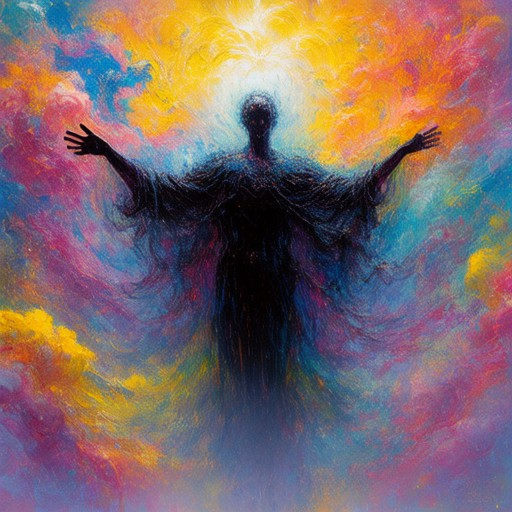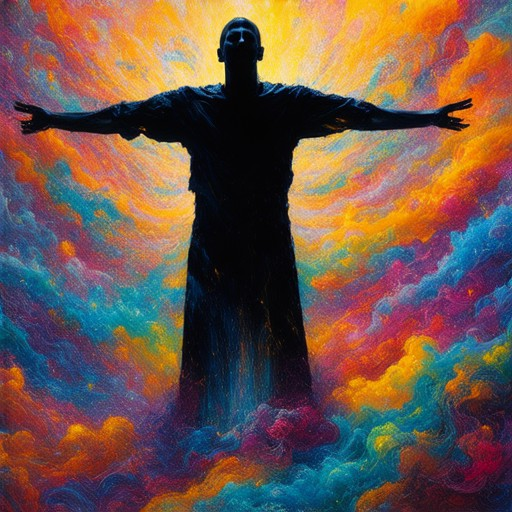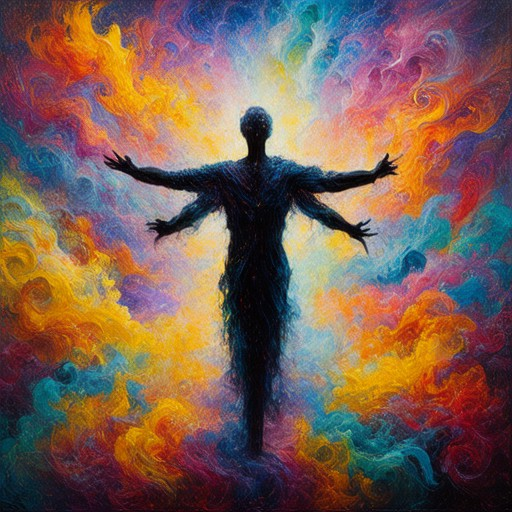Discovering new art inspiration and techniques can transform your creative process, offering endless possibilities to elevate your craft. Whether you’re a seasoned artist or just beginning, understanding the sources of artistic inspiration and mastering essential techniques is key to producing compelling work. From natural beauty and historical artifacts to personal experiences and cultural influences, art inspiration can be found in everyday moments and extraordinary places. Explore how to channel this inspiration creatively, using tools like sketching, journaling, and reference books to bring your visions to life. Dive into the world of art techniques, from basics like drawing and shading to advanced methods such as digital tools and mixed media. Learn about the seven basic elements of art—line, shape, color, form, texture, space, and light—and how to apply them effectively in your compositions. Understand the four primary sources of inspiration, including nature, history, people, and personal stories, and discover how combining these can fuel your artistic growth. Delve into the four pillars of art—technique, composition, originality, and purpose—to create works that resonate deeply with your audience. Finally, uncover how artists find their inspiration, overcoming creative blocks through methods like mind mapping and experimentation. Whether you’re seeking fresh ideas or looking to refine your skills, this guide offers valuable insights and resources to ignite your creativity and push your boundaries.
Key Takeaways
- Harness Personal Experiences to infuse authenticity and emotional depth into your art.
- Draw Inspiration from Nature to create vibrant and dynamic作品.
- Leverage History and Culture to add layers of meaning and context to your creations.
- Fuel Your Creativity with Imagination, crafting new worlds and abstract concepts.
- Master Artistic Techniques to effectively express your ideas.
- Define Artistic Purpose to keep your work focused and driven.
- Express Through Artistic Expression using your chosen medium and style.
- Build on Artistic Tradition to connect deeply with your audience.
- Observe and Explore to find beauty in everyday moments.
- Research and Study to reignite creativity through art history.
- Capture Personal Moments to create relatable and meaningful artwork.
- Collaborate and Learn to broaden your artistic horizons.
- Journal and Document to track your artistic evolution.

Five Main Inspirations for Art
Art is a deeply personal and universal form of expression, drawing inspiration from a vast array of sources. Here are five primary catalysts that often spark creativity:
- Personal Experiences and Emotions :
Art often serves as a medium for self-expression, allowing artists to channel their emotions, memories, and thoughts. Whether it’s the beauty of nature, the complexity of human relationships, or the chaos of urban life, personal experiences shape an artist’s unique vision. - Observation of the World Around Us :
Artists frequently find inspiration in the world they inhabit. This includes studying people, cultures, and environments, observing how light interacts with objects, or noticing patterns in nature. These meticulous observations often lead to fresh perspectives and innovative ideas. - Artistic Movements and Styles :
Exploring different artistic movements, such as Impressionism, Abstract Expressionism, or Street Art, exposes artists to diverse techniques and themes. By studying masterpieces, artists gain insight into composition, color theory, and narrative storytelling, which they can then reimagine in their own work. - Famous Artists and Their Work :
Studying canonical works from artists like da Vinci, Van Gogh, or Banksy provides a foundation for understanding artistic expression. Analyzing these pieces helps artists develop their own style while learning from established techniques and creative approaches. - Nature and the Natural World :
Many artists find endless inspiration in the natural environment. Landscapes, seascapes, and flora/fauna often serve as subjects, offering texture, color, and form that inspire both realistic and abstract representations.
By exploring these avenues, artists can continually evolve their craft, creating meaningful and impactful works that resonate with audiences.
Art Techniques and Their Examples
Art techniques encompass a wide range of creative methods used by artists to express themselves and convey ideas. Below are some common art techniques along with examples:
-
Drawing
Drawing is a fundamental art technique that involves marking surfaces with lines, shapes, or symbols. Common tools include:
- Pencils
- Charcoal
- Markers
- Bristle brushes
Examples:
- Sketching landscapes or portraits
- Creating detailed illustrations
- Generating conceptual art
-
Painting
Painting involves applying paint to surfaces to create images, scenes, or abstract works. Different types of paint include:
- Oil paints
- Acrylics
- Watercolors
- Gouache
Examples:
- Oil paintings depicting historical scenes
- Abstract expressionist works using vibrant colors
- Watercolor landscapes focusing on light and shadow
-
Sculpture
Sculpture is the creation of three-dimensional objects, often from materials like clay, stone, metal, or wood. Techniques include:
- Additive methods (building up)
- Subtractive methods (carving away)
- Casting
- Fabrication
Examples:
- Statues carved from marble
- Abstract sculptures made from welded steel
- Cast iron figures created via lost-wax method
-
Printmaking
Printmaking involves transferring images onto surfaces using plates, stencils, or other tools. Common printmaking techniques include:
- Lithography
- Etching
- Screen printing
- Intaglio
Examples:
- Colorful lithographic posters
- Black-and-white etchings
- Screen-printed T-shirts
-
Photography
Photography captures light and shadows to create images on film or digital sensors. Common photography techniques include:
- Portrait photography
- Landscape photography
- Still life photography
- Abstract photography
Examples:
- Professional portrait sessions
- Wide-angle landscape shots
- Still life compositions with macro lenses
-
Digital Art
Digital art involves creating artwork using software tools like Photoshop, Illustrator, or Procreate. Techniques include:
- Photo manipulation
- Vector illustration
- 3D modeling
- Digital painting
Examples:
- Retouching photos to perfection
- Designing logos and branding assets
- Creating 3D characters for games
-
Mixed Media
Mixed media combines traditional and non-traditional materials to create unique artworks. Common combinations include:
- Paint and collage
- Scrap paper and ink
- Text and found objects
- Ceramics and metal
Examples:
- Collage art blending paint and newspaper clippings
- Assemblage pieces combining discarded objects
- Mixed-media paintings layering different textures

What Are the 7 Basic Elements of Art?
- Line: A straight or curved mark that creates contour and direction in art. Lines can be thick or thin, continuous or broken, and vertical or horizontal.
- Shape: The outline or form of an object, created by lines and giving it mass and volume. Shapes can be geometric (like squares, circles) or organic (more irregular).
- Form: Three-dimensional objects or figures that have height, width, and depth. Form is created through the arrangement of lines and shapes.
- Space: The area around or between objects, which gives art depth and dimension. Space can be positive (empty area) or negative (the space the object occupies).
- Texture: The surface quality of an object, which can be smooth, rough, soft, or hard. Texture can be real (tactile) or implied (visual)
- Color: The element that conveys mood, emotion, and atmosphere. Colors can be warm or cool, bright or muted, and can interact in ways that influence perception.
- Value: The relative lightness or darkness of colors, creating contrast and helping to define shape and form. Value can range from light to dark, with intermediate tones in between.

Four Inspirations for Art Creation
The creation of art is influenced by various sources of inspiration, which fuel the artistic process and result in unique works. Here are four primary sources that artists often draw from:
- Personal Experiences : Life events, emotions, and memories are common catalysts for art. These experiences provide a personal touch and allow artists to express themselves authentically.
- Nature : Many artists find inspiration in the natural world, including landscapes, animals, and seasonal changes. Nature’s beauty and diversity often translate into vibrant and dynamic artwork.
- History and Culture : Artists are influenced by historical events, cultural traditions, and societal movements. Exploring these elements can offer deeper context and meaning to their creations.
- Imagination : Creativity often stems from the artist’s imagination, allowing them to craft entirely new worlds, characters, or abstract concepts that may not exist in reality.
Exploring these sources of inspiration can lead to a richer and more meaningful artistic journey. To delve deeper, you can discover more techniques and historical influences by visiting our Artistic Techniques and Historical Influences sections.
The Four Pillars of Art
The concept of the “four pillars” in art refers to the fundamental aspects that define and shape artistic creation. These pillars provide a framework for understanding the essential elements that every artwork must master. Below is a detailed breakdown of each pillar:
- Artistic Technique
- This involves the skills and methods used to create art. Techniques can range from traditional mediums like painting and sculpture to modern digital tools. Mastery of technique allows artists to express their ideas effectively and consistently.
- Example: A painter might use brushwork to convey emotion, while a sculptor uses texture to evoke sensation.
- Artistic Purpose
- Every artwork serves a purpose, whether it is to communicate a message, reflect personal emotions, or inspire others. Understanding this purpose helps artists stay focused and driven in their creations.
- Example: A mural might aim to celebrate cultural heritage, while a poem could explore themes of love and loss.
- Artistic Expression
- This pillar focuses on how an artist communicates ideas and feelings through their work. Expression often ties into the chosen medium and style, allowing unique voices to emerge.
- Example: A dancer might use movement to tell a story, while a musician uses melody to evoke emotions.
- Artistic Tradition
- Art does not exist in a vacuum; it builds upon the works of those who came before. Understanding and respecting traditions helps artists connect with their audience on a deeper level.
- Example: A photographer might draw inspiration from classical compositions to create a contemporary piece.
By mastering these four pillars, artists can create meaningful and impactful works that resonate with audiences. Each pillar represents a cornerstone of artistic creation, ensuring that art remains a dynamic and evolving force in society.

How Artists Find Their Inspiration
Artists draw motivation from a variety of sources, each uniquely personal to their creative process. Here are some common approaches they employ:
- Observation and Exploration: Many artists seek inspiration by immersing themselves in their surroundings. This could mean taking a walk in nature, exploring a bustling cityscape, or simply sitting in a quiet café. By paying attention to details like colors, shapes, textures, patterns, and light effects, artists uncover hidden beauty in the ordinary.
- Research and Study: delving into art history and studying the works of masterpieces can reignite creativity. Artists often analyze iconic pieces to understand composition, color theory, and stylistic techniques that resonate with their own vision.
- Personal Experiences: Life events, emotions, and memories frequently serve as catalysts for artistic creation. Whether it’s a moment of joy, loss, or reflection, these experiences often translate into meaningful and relatable artwork.
- Engagement with Other Artists: Collaborating with peers, attending exhibitions, or watching videos of creative processes can spark curiosity and innovation. Learning from others’ techniques and perspectives broadens an artist’s toolkit.
- Journaling and Documentation: Keeping a sketchbook or digital log allows artists to capture ideas, experiment with styles, and track progress over time. This habit fosters a deeper understanding of one’s artistic evolution.
At Artful Journey, we believe every artist’s journey is unique. Our platform provides resources, tutorials, and inspiration to help you discover your creative path. Explore our art forms, techniques, and guides to unlock your potential and find your muse.
For more insights, visit our main website or check out our art resources section. Let your creativity flow and embrace the journey of self-discovery!




0 Comments